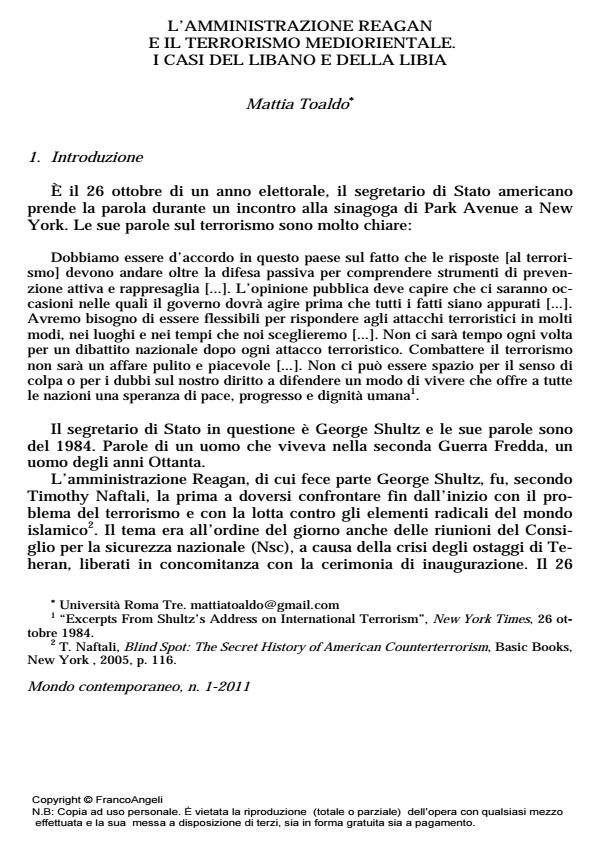The Reagan administration and Middle Eastern terrorism. A case study about Lebanon and Libya
Journal title MONDO CONTEMPORANEO
Author/s Mattia Toaldo
Publishing Year 2011 Issue 2011/1
Language Italian Pages 28 P. 69-96 File size 331 KB
DOI 10.3280/MON2011-001003
DOI is like a bar code for intellectual property: to have more infomation
click here
Below, you can see the article first page
If you want to buy this article in PDF format, you can do it, following the instructions to buy download credits

FrancoAngeli is member of Publishers International Linking Association, Inc (PILA), a not-for-profit association which run the CrossRef service enabling links to and from online scholarly content.
The article reviews the ideas and proposals behind the policy of the Reagan administration against Middle Eastern terrorism, analyzing specifically the cases of the intervention in Lebanon (1982-1984) and the strike against Libya in 1986. These cases have been picked because in both the US was faced with a terrorist threat and, at the same time, it decided to use its military force directly and not through proxies. The aim is to investigate the main ideas that were put forward by the different members of the Reagan administration and that became popular later: pre-emptive war, state-sponsorship of terrorism, the extension of executive prerogatives, regime change and the emphasis on terrorism as an epiphenomenon rather than on the analysis of the enemies using it against the United States. Based on this analysis, the author concludes that the Reagan administration, though implementing often contradictory and ineffective policies against Middle Eastern terrorism, served as the breeding ground for ideas and policy-options of what became the "global war on terror" in the early 2000s.
Keywords: Reagan administration, Middle Eastern terrorism, Libya, Lebanon, neoconservatives, global war on terror
Mattia Toaldo, L’amministrazione Reagan e il terrorismo mediorientale. I casi del Libano e della Libia in "MONDO CONTEMPORANEO" 1/2011, pp 69-96, DOI: 10.3280/MON2011-001003